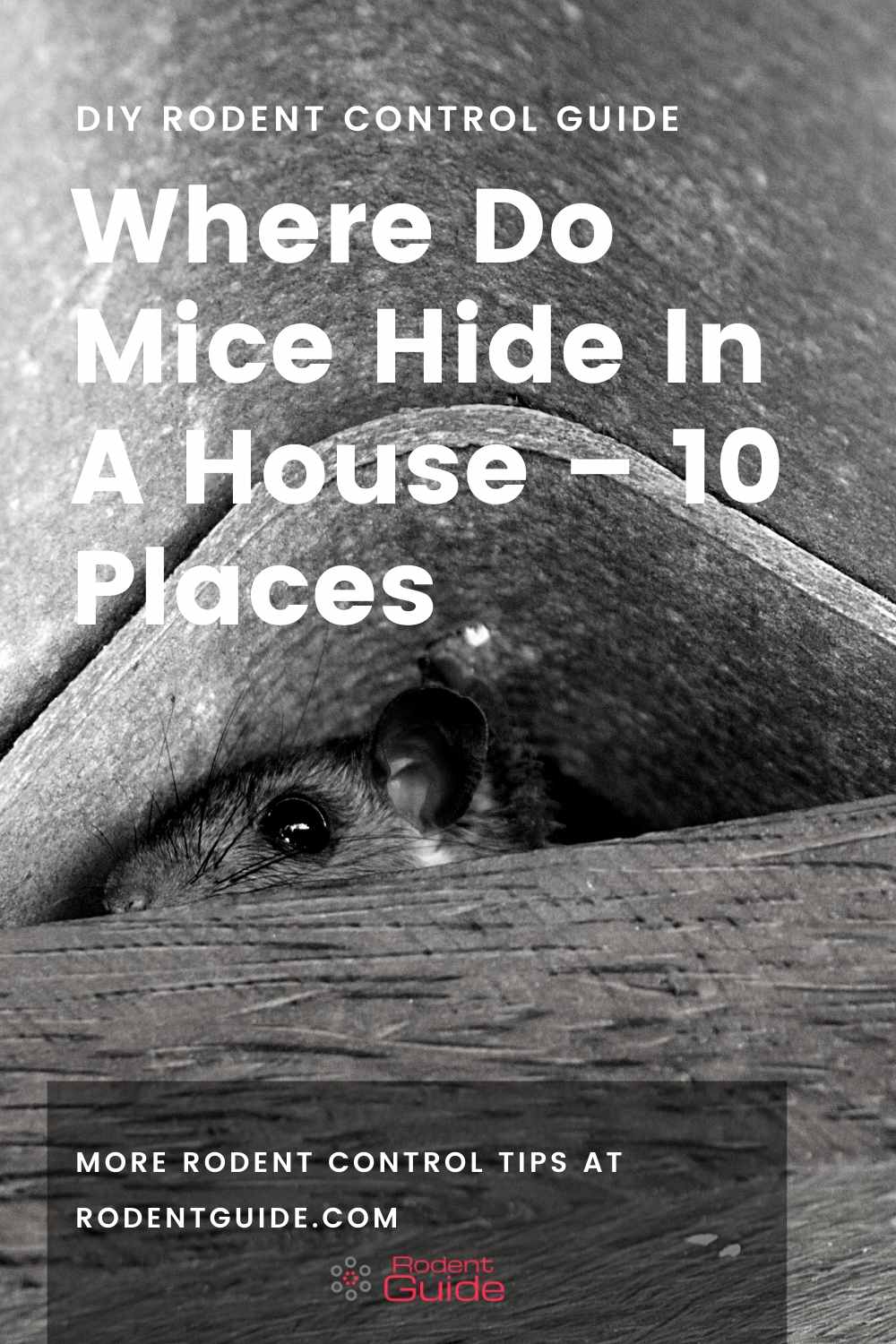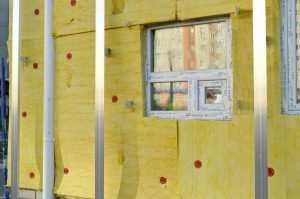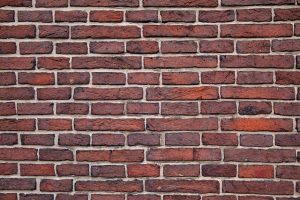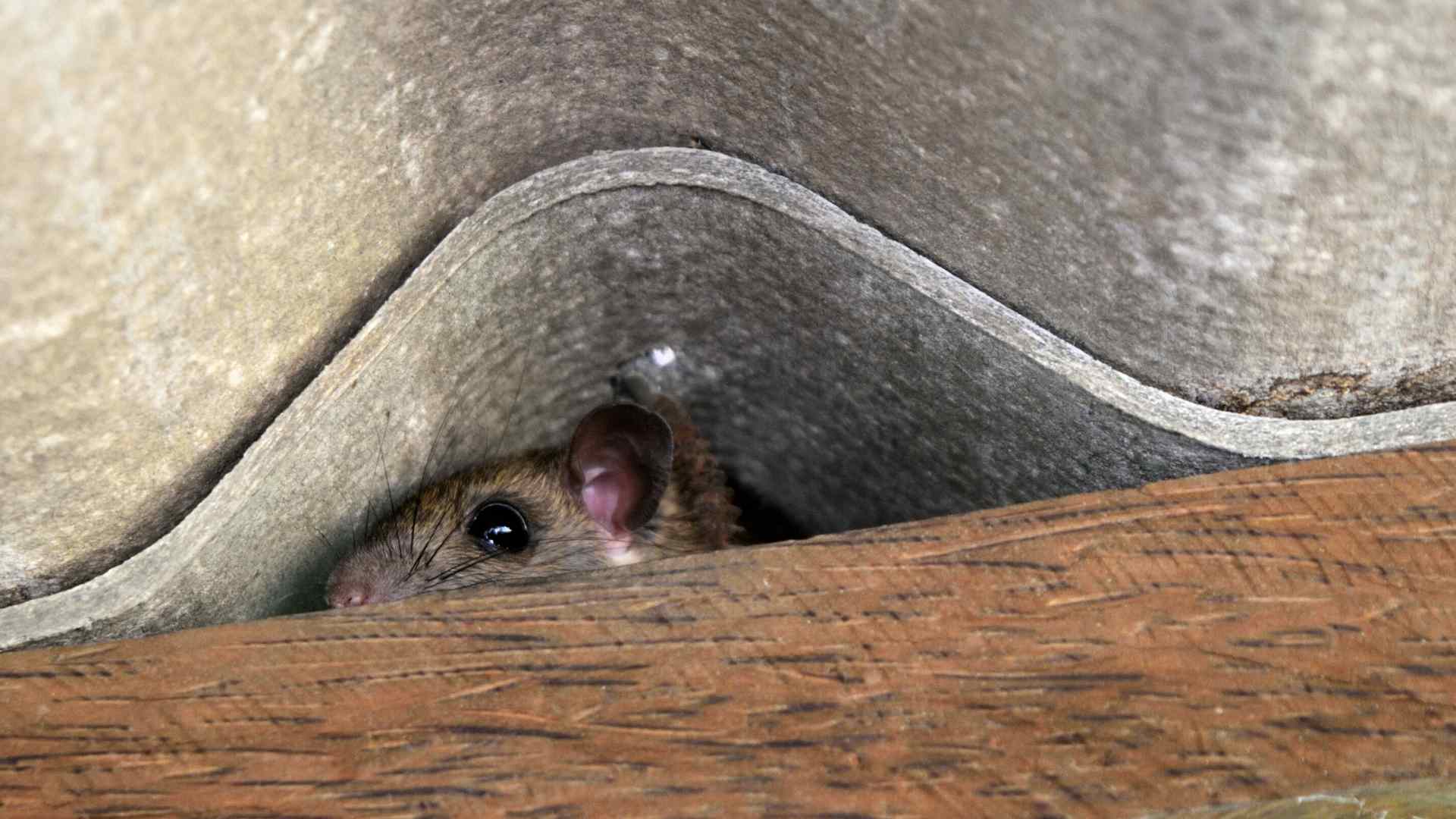Do you think a mice family may be living in your house?
It is a scary thought, knowing there could be a family of mice scurrying around your home may bring you out in the sweats!
How do you find them, and where do mice hide in a house?
Your house is like a city to mice.
The first thing you need to understand, and I am sure you already know, is that your house will seem huge to a family of mice! When considering the question ‘where would mice hide in a house?’ the potential answers are endless…
This makes finding mice a considerable challenge. When you know the signs of having mice in your house, the next step is to narrow down the options. You must understand where mice hide in a house to do that. Then you can hunt them down and get rid of mice for good!
What you will learn in this post:
- The most common places for mice to hide in your home
Where Do Mice Hide In A House? In These 10 Places.

If you want to know the answer to the question ‘where do mice hide in a house?’ then you are in luck… because here are the top 10 places:
The Attic

When asked, ‘where do mice hide in a house?’, my first answer is always the attic!
This is the most common place you will find mice, and it is where I have seen both mice and rats again and again!
The biggest reason mice will choose your attic is that it is one of the only places in your house that is not frequently visited.
Mice have a keen sense of smell, and they are likely to detect less of you in the attic than anywhere else in the home.
The problem is that most attics are full of junk! That is not a problem for mice (more stuff to chew on), but it is a problem when you need to find them.
If you want to know how to find a mouse, you should start in the attic!
Pile of Clothes

Do mice hide in clothes? Yes, they do! Mice like to be comfortable, and what is more comfortable than a box of old clothes? Again, as mice have an excellent sense of smell, they can detect if these clothes have been worn recently and decide whether or not they are safe to nest in them.
I am sure (like everyone else) that there are boxes of old clothes in your attic. If a mouse finds this box, it is like a penthouse apartment for them!
If you have space in your attic, it is worth setting up a zone where you can hang your clothes. It will help to stop mice from setting up homes in them. However, this alone will not prevent mice from using clothes as a home. Clothes have pockets, and pockets are a comfortable, warm place for a mice’s nest!
Boxes

If you are wondering where to find mice in your home, you should be checking in all the boxes stored away in your house!
There are likely to be many boxes in your attic, basement, or even around your house.
A box is not only a great hiding place, but it also offers mice some material they can use to plump up the mouse nest.
If you have mice in your house, you can do nothing to protect against mice damaging any boxes you may have. Instead, you should limit the number of boxes to reduce their hiding places.
Attic Insulation

Of all the mice I have found living in houses, attic insulation is the most common place for mice to hide.
Attic insulation offers comfort, warmth, and protection from predators and humans.
The big problem with mice in your insulation is the damage they make. Not only do they chew it and use it for bedding, but they also use it to poop and urinate. When you rid your house of mice, the cleanup operation is much worse when they have been nesting in insulation.
Finding a family of mice in attic insulation will be a challenge. Not only is there lots of poop and urine, but most of it is likely to be covered by other items. As soon as you begin to move items and check for mice, they will know you are there and will rush off to find another safe place.
Sofa

Your sofa can be used as a home to a family of brave mice!
A sofa offers comfort and a small amount of protection, mainly if it is not used often. Mice are more likely to pick a sofa that is not used often. If you have a spare room with a sofa, this is a great opportunity for mice to settle.
The good news is that you will be acutely aware that your sofa is being used as a house, especially if you sit on it every night. The bad news is you may damage the sofa when removing the mice.
Mice will chew through the fabric and use the section between the floor and the seats. That means you will need a bigger gap to get in there to see!
Walls

Most houses will have a gap between the drywall and the brickwork. These are the routes that mice will use to safely navigate your home, avoiding you and any pets you have.
Mice will also use these runs to set up home because they will know that you will find it difficult to get to them.
The good news is, although that has been known to set up home here, they are most likely to keep them clear so they can use them as a route through your house.
Basement

Your basement is another place that you rarely visit, and that makes it a safe place for mice to be.
Not only is it safe from you and safe from predators, but basements are also usually full of junk that mice can use as bedding.
Your basement is just as attractive to mice as your attic is. With so many items in there, mice will be overwhelmed by the choice of bedding. Mice will use these places as a base while they navigate your house looking for food.
Venting Systems

Venting systems are small, cozy, and offer protection from predators. Although some predators can get in, it will not be their first choice.
If you have mice in your venting system, you will need to remove them ASAP, as mice could be hazardous to your health, especially as a venting system offers an escape for certain gases.
Crawl Spaces

Crawl spaces in your house can also be a great place for mice to set up a home. The bigger the area, the less likely they will want to use it.
The chances increase as you begin to store items in crawl spaces. Many people use these to store old clothes, old documents, Christmas decorations, and many other things.
Storing items in crawl spaces will make the area feel more enclosed and more secure to mice. It is well worth keeping these spaces clear of clutter!
Cupboards

Where do mice hide in a house? The last of the most common places are in cupboards.
Your cupboards are an excellent choice for mice to set up home in your house. Mice will be acutely aware that humans commonly access cupboards. Instead, they will choose a cupboard in an area less likely to be visited by you.
If you have cupboards in your attic or basement, then these are perfect for mice.
Think twice about storing any clothing and food in cupboards you will not be accessing. This is also extremely important for cupboards in your attic or basement.
Conclusion
Where do mice hide in a house? I have identified 10 of the most common places in this post. Knowing where mice hide in your home makes it much easier to hunt them down.
As the two most common places for mice to hide (attic and basement), I have a few mouse traps set up just waiting for them to appear, looking for a warm place to set up a home. I am cautious when going to the basement or attic!
It is difficult to cover other parts of your house with traps because you do not want to set them off accidentally, or even worse, you don’t want the kids to set them off!
Now you know where mice might hide in a house, you will want to know how to get a mouse out of hiding so you can get rid of it.
If you think you have mice in your house, I wish you luck finding them.








